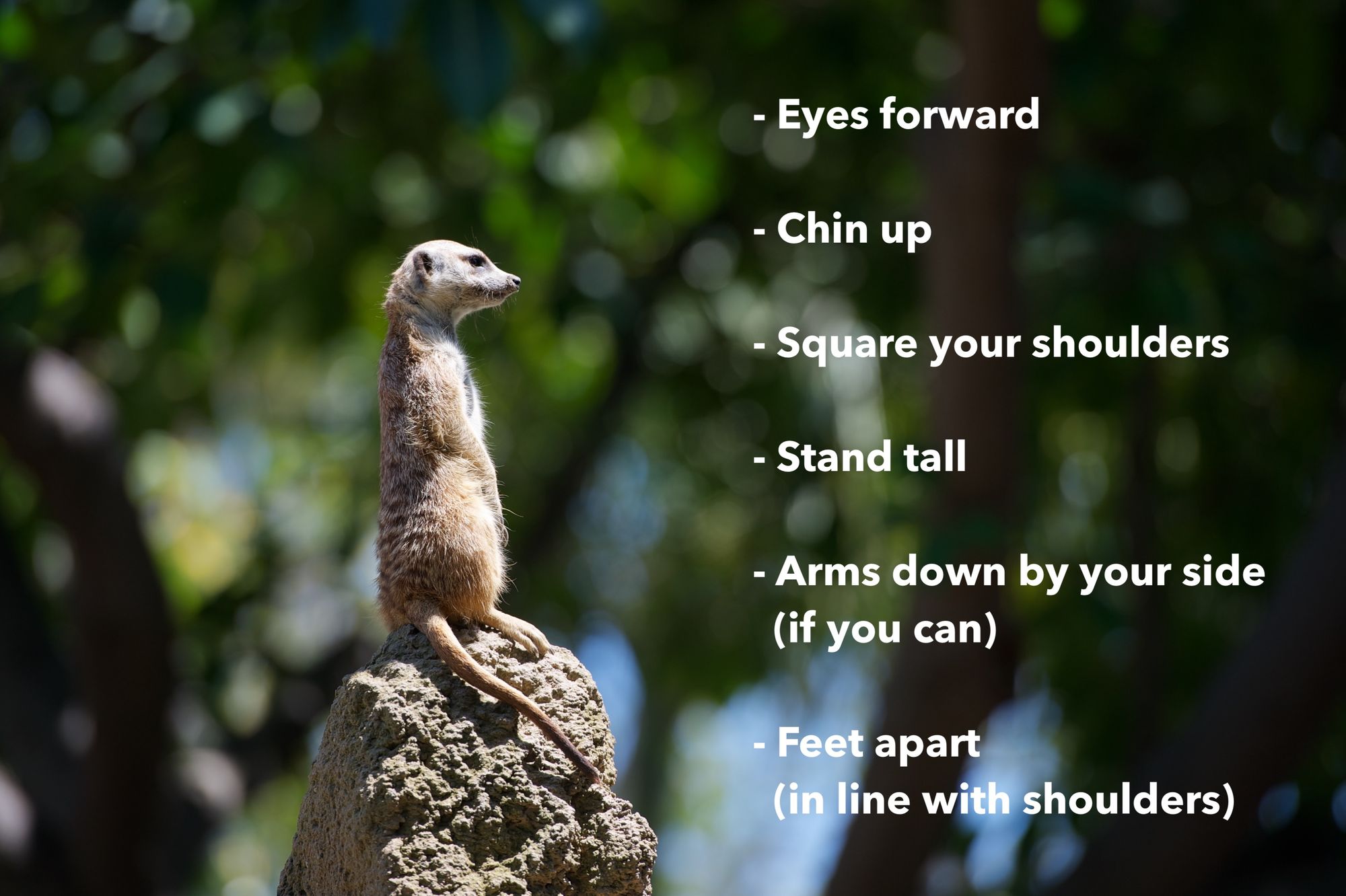How to Sing High: 11 Helpful Tips

Singing high is one of the most common issues people have when learning to sing. So you’re not alone! There is so much power in reaching a high note, and it’s something that the audience always loves.
I found training my voice to sing higher opened up many more opportunities to sing and gave me confidence that I didn’t have before. Everyone can learn to sing high notes, so if you’re looking to do the same, here some helpful tips you can use.
- Add twang to your voice
- Open up your mouth
- Open up the back of your throat
- Change the vowel sound of your note
- Use correct singing posture
- Support the note with your body
- Control your breathing
- Increase your range with vocal exercises
- Strengthen your voice with vocal exercises
- Stretch your facial muscles
- Remain hydrated
I will go into each of these in more detail below. Some of them will enable you to sing high instantly, in a more temporary way. Some will help you to sing higher in the long-run.
How to Sing High – Instantly
The following tips will help you sing a high note instantly. If you are trying to sing a note outside your range, you may be at risk of damaging your voice, in which case you will need to work on increasing your range. You can find more about vocal range here.
If you are just trying to sing a note that is within your range, but on the upper limits, these first seven tips will help you during your performance. I will talk about singing notes beyond your range further down.
1. Add Twang to Your Voice
Twang is so easy to add to your voice when you try to hit that note. It is basically using something easy in our minds to coordinate all the muscles in the throat to do what we need them to do to reach the note.
On a more technical level, using twang will engage our middle voice. This is a mixture of our chest voice (what we use to talk) and our head voice (our breathy voice). Using our head voice usually produces a weaker, more delicate sound, which can serve it’s purpose if you are singing a softer song. Using chest voice for a high note will make it sound like you are yelling. This is usually not very nice to listen to. The middle voice provides that perfect balance of quality tone and power.
To add twang, think of singing like a country/folk singer. You are steering your voice toward sounding more like a witch. This is introducing nasal tone into your note, which helps to strengthen your upper register.
One easy way to try this is to pretend to be a cat and ‘meow’ the note you’re trying to hit. We naturally will use that twang when we say the word ‘meow’ because we are trying to imitate the sound of the cat. Try this and then try to keep the same amount of twang when you use the lyrics.
If you do start sounding like a witch or a cat, maybe tone it down a little – you’ve gone a bit too far with the twang.
2. Open Up Your Mouth
Opening up the mouth is a classic technique used by opera singers. I’m sure you do it yourself when you pretend to sing operatic. But there is a reason for this.
Opening up the mouth allows your breath to flow more freely from your lungs and will also improve the resonance of your voice. This means that the note should be less restricted and have a nicer tone.
To open up your mouth, you should drop your jaw so that your teeth are approximately 2cm (or 2 fingers) apart. Your lips should also be parted, but this should happen naturally as you drop your jaw.
3. Open Up the Back of Your Throat
Opening up the back of the throat has a similar purpose to opening up your mouth. It will allow the air to flow more freely and will improve your tone.
The main difference is the muscles you are controlling. Your tongue will be the main muscle used to open your throat. You need to lower your tongue to the floor of the mouth.
To do this, you should press the back of your tongue down and touch the tip of your tongue to your front bottom teeth. We naturally press our tongues down when we yawn, so try doing a fake yawn, and you will feel your tongue falling into the correct position.
Although we do want to add some twang to our voice, having the tongue too high in the throat will cause you to sound too nasally. If you’re interested in learning more about reducing nasality, you can click here.
Between opening up your mouth and the back of your throat, you should feel like you’re holding an egg in your mouth.
4. Change the Vowel Sound of Your Note
Changing the sound of the vowel you are singing is a great way to hit that high note. It may seem like you are changing the word completely, but it really doesn’t make the word sound weird at all.
The idea is to exchange more restrictive vowel sounds with those that open up your throat. For example, when singing the end of ‘The Prayer’, instead of singing the word ‘ra’ (‘rah’), I sang it as ‘ro’. The ‘ah’ sound is slightly more restrictive in this context than the ‘o’ you would hear in bowl.
Each vowel has multiple pronunciations in the English language. It’s all about choosing one that opens up your throat more, but sounds most like the word you are trying to sing. It’s better to just sing through each option to see what works for your note. There may be a sound that doesn’t seem good in theory, but actually works quite well when you try it.
Here are a variety of vowel sounds that close the throat:
- ‘a’ as in ants or pack
- ‘ai’ as in spray or nail
- ‘e’ as in peck or spell
- ‘ee’ as in sneeze or please
- ‘i’ as in stick or pin
- ‘oo’ as in choose or tool
Here are the vowel sounds that open the throat:
- ‘ah’ as in guitar or tar
- ‘er’ as in together or stir
- ‘ie’ as in pie or desire
- ‘o’ as in cold or pot
- ‘oh’ as in boat or snow
- ‘u’ as in tuck or understand (note this is almost a shorter version of ‘ah’)
So if your lyrics are giving you a vowel sound that closes the throat, try exchanging it for one that opens the throat, and you should find the high note is easier to sing. Even some of the vowel sounds that open the throat can be interchanged, such as my ‘ra’/’ro’ example
5. Use Correct Singing Posture
Most of us these days have developed bad posture, whether from leaning over a desk, sitting at a computer or holding a child all the time. Whatever it is, you shouldn’t let that get in the way of your singing.
Bad posture can reduce the strength behind your voice (which I will talk about next) and can affect the ease of airflow from your lungs. This makes it harder to sing, especially those higher, more difficult notes.
A helpful tip is to imagine you are being held up by a piece of string. The string is attached to the top of your head and is pulling you up towards the ceiling. This is much like is seen in the image at the beginning of this article.
A fun way to think of it is to be like this cheeky meerkat. Just like a meerkat, you need to be standing tall. For more information on correct singing posture and simple posture exercises for singers, click here.

6. Support the Note with Your Body
The power of your note will come from your core. This involves the abdominal muscles (your stomach) and the gluteal muscles (your buttocks). By engaging your core, you will find you can control your breathing more easily, and you are not straining the muscles in your throat to produce a powerful sound.
Your abdominal muscles (abs) will need to be engaged. This is a natural reflex when something hits you in the stomach. But if you’re unsure how to engage these muscles, I recommend trying to pull your belly button towards your spine.
The gluteal muscles are the muscles that make up your buttocks. To engage these muscles, imagine you are squeezing a coin between your bottom cheeks.
Strengthening your core will help strengthen your voice. An effective exercise you can do is the plank, where you hold yourself in a horizontal position using your forearms and toes. This is just one of many exercises you can find to strengthen your core.
7. Control Your Breathing
‘Shhhhhhhhhhh’
Once you have correct singing posture, you can focus on your breathing. You should be able to take big breaths in, but release the air slowly.
When you breathe in, you should be using your diaphragm. This means that as you take a big breath on, your stomach should expand. If your chest and shoulders are rising as you breathe in, you are not using your diaphragm fully.
The diaphragm is a very strong muscle, so if your breath is using only the diaphragm, you will have more power behind your note. If you are partly using your chest and shoulder muscles to breath, you will not only lose power behind the note, but will also become fatigued quite quickly.
Once you have taken a big breath in, you should engage your abdominal and gluteal muscles, as I mentioned before. This then gives you the control you need to let the air out slowly. The slower the air is released, the clearer, steadier and more powerful your note will be.
A great way to practice releasing your breath slowly is the ‘shhhhhhh’ exercise. This restricts how much air comes out of your mouth, controlling the diaphragm.
If you incorporate this into your daily routine, your diaphragm should start to build muscle memory and become more toned. It will help you with your higher notes in the long-run as well as during your performance.
How to Sing High – In the Long Run
The last four tips will help you to sing high in the long-run, not just on the night of your performance. They should be done on a regular basis, preferably daily.
These tips make use of muscle memory. If your body does something enough times (consciously), it will remember to do it when you’re not thinking about it (subconsciously). So if you’re regularly training the muscles in your throat to act a certain way to reach a high note, they will learn to do this automatically when you perform.
It’s also a good idea to on the day of your performance as they can create a temporary improvement immediately prior to singing.
8. Increase Your Range with Vocal Exercises
Everybody is different when it comes to increasing their range. Some it will take weeks, others it may take years.
It also depends on your goal. If you’re trying to sing a whole octave higher than your natural range, you’re going to be training a very long time.
The key is to take it step-by-step. First, you will need to know your vocal range, which will tell the highest note you can comfortably sing. This will give you a baseline for future improvements.
You will then work on reaching the note that is one step (one semitone) higher; your new high note. Here are a number of great exercises that you can do to help:
Lip Trills
Put your lips together, push them out into a gentle pucker, and then blow. ‘Lip trills’ is just an official way of saying blow some raspberries! But instead of just air, you want to be making a sound.
Once you have the hang of it (it might tickle your nose a bit!), start singing scales, getting higher and higher. Once you hit the highest notes of your register, including your new high note, start coming back down again with the scales.
High-Resistance Exercise
This exercise also involves singing through the scales to your new high note, but this time with your fist in front of your mouth.
Start by placing your fist over your open mouth and blowing. Now reposition your fist so that only the tiniest bit of air is escaping around your mouth (your cheeks should become puffy). Once you have the right position, start singing through the scales. It will sound like a very muffled ‘ah’.
Sirens
Sirens are one of my favorite exercises. They’re loud, but lots of fun. This involves sliding your voice from the lower end of your range up to your new high note and then sliding back down again. You should sound like a fire engine, hence the name.
This is usually done with an ‘oo’ sound, but you can play around with different vowel sounds. The ‘oo’ naturally engages your middle voice, making the transition between chest voice and head voice smoother as you slide. If this transition is not done properly, you might notice a crack or not-so-smooth transition you change from chest voice to head voice.
9. Strengthen Your Voice with Vocal Exercises
You will notice that lip trills and high-resistance exercises do not give your voice the opportunity to practice some power behind the notes. That is because they are designed to gently introduce your new high note.
If you are wanting to improve the strength of your voice, you can do exercises that are louder and unrestricted. These exercises still use ascending and descending scales (getting higher and higher and then coming back down).
ah-eh-ee-oh-oo
Singing Your Vowels
This is a great exercise to even out the strength of your voice with different sounds. It involves singing the phrase ‘ah-eh-ee-oh-oo’ in one continuous breath, holding the same note. You will then move up to the next note and sing the same phrase in one breath.
You will usually continue higher and higher until you reach the limit of your range.
Na Nas and Nay Nays
This is an old favorite for singing teachers. You will simply sing through the scales, ascending and descending, with a ‘na’ sound and a twangy ‘nay’ sound. The ‘na’ will work more on your chest voice, and the ‘nay’ will work more on your middle voice. Sing them at a comfortable but loud volume.
These may seem repetitive, but these exercises are popular for a reason. Stick with it, and your voice will get stronger and stronger each day.
10. Stretch Your Facial Muscles
Everybody has a different facial expression at rest. Some are nice and relaxed, while others seem to have a permanent frown. The way we talk is also different from culture-to-culture. Some will use a lot of expression and open their mouth wide when talking, while others will be more closed and neutral.
Whatever your natural resting face looks like, you can stretch your facial muscles before singing to give your face more freedom. This will mean your expressions are not as strained and it will be easier to open your mouth wide to hit those high notes.
The exercises for this are simple. Just copy these faces below.


If you repeat this about 10 times before your performance, the muscles in your face should be stretched and warmed-up ready for you to sing.
11. Remain Hydrated
Lastly, don’t forget to drink water. This is something that will keep your voice healthy and prevent strain when you reach for those high notes.
You should be drinking at least eight cups of water every day, but to remain hydrated, about one cup every half hour will do the trick. It also takes about three hours for the water you drink to hydrate the cells in your throat, so make sure you are drinking well-before you sing.
If you follow these 11 tips, you should find that high notes become easier and you are able to sing higher than your could before!
